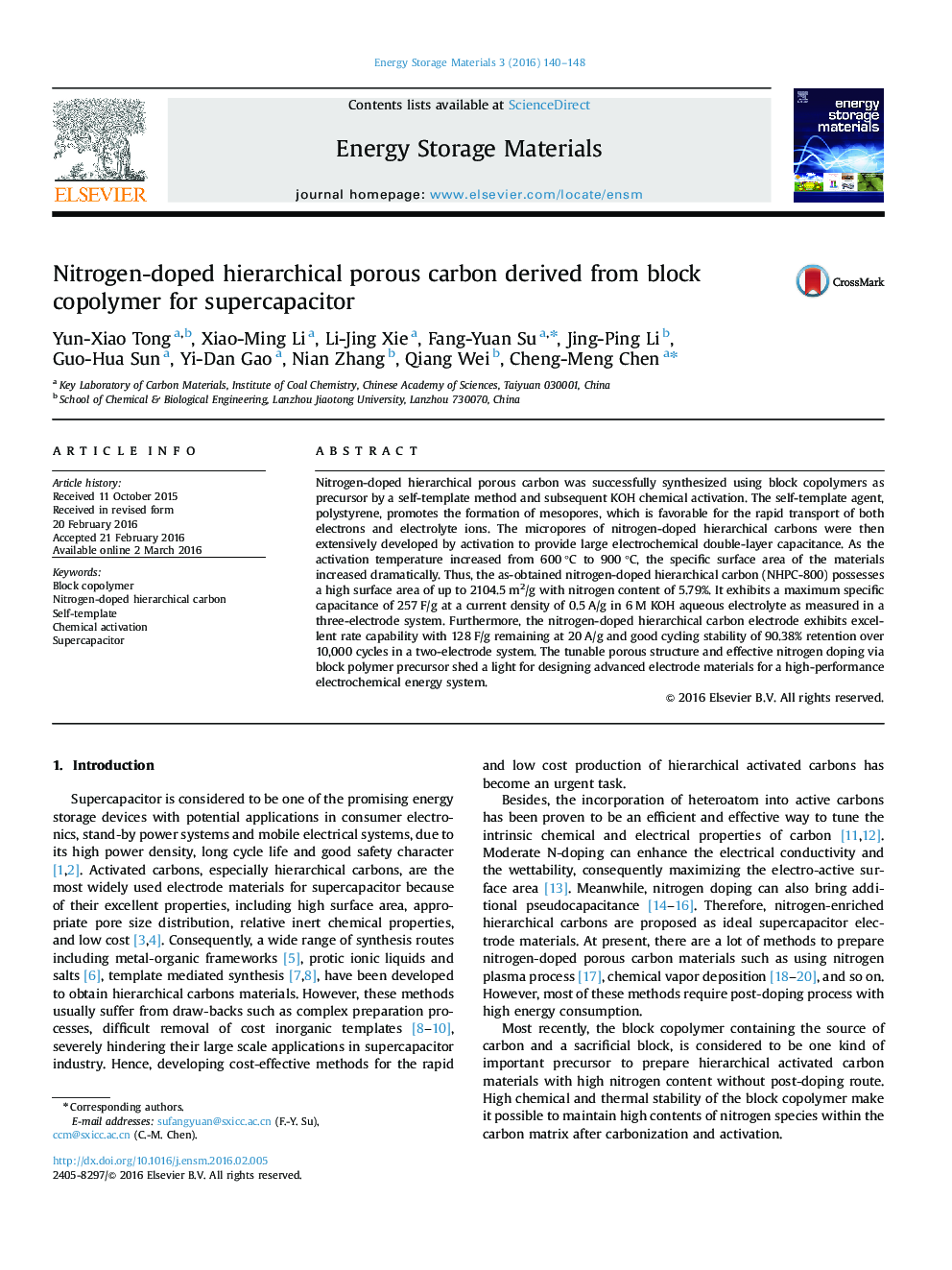| Article ID | Journal | Published Year | Pages | File Type |
|---|---|---|---|---|
| 1564638 | Energy Storage Materials | 2016 | 9 Pages |
Abstract
Nitrogen-doped hierarchical porous carbon was successfully synthesized using block copolymers as precursor by a self-template method and subsequent KOH chemical activation. The self-template agent, polystyrene, promotes the formation of mesopores, which is favorable for the rapid transport of both electrons and electrolyte ions. The micropores of nitrogen-doped hierarchical carbons were then extensively developed by activation to provide large electrochemical double-layer capacitance. As the activation temperature increased from 600 °C to 900 °C, the specific surface area of the materials increased dramatically. Thus, the as-obtained nitrogen-doped hierarchical carbon (NHPC-800) possesses a high surface area of up to 2104.5 m2/g with nitrogen content of 5.79%. It exhibits a maximum specific capacitance of 257 F/g at a current density of 0.5 A/g in 6 M KOH aqueous electrolyte as measured in a three-electrode system. Furthermore, the nitrogen-doped hierarchical carbon electrode exhibits excellent rate capability with 128 F/g remaining at 20 A/g and good cycling stability of 90.38% retention over 10,000 cycles in a two-electrode system. The tunable porous structure and effective nitrogen doping via block polymer precursor shed a light for designing advanced electrode materials for a high-performance electrochemical energy system.
Related Topics
Physical Sciences and Engineering
Energy
Fuel Technology
Authors
Yun-Xiao Tong, Xiao-Ming Li, Li-Jing Xie, Fang-Yuan Su, Jing-Ping Li, Guo-Hua Sun, Yi-Dan Gao, Nian Zhang, Qiang Wei, Cheng-Meng Chen,
